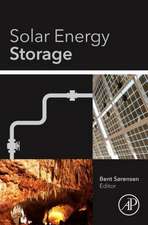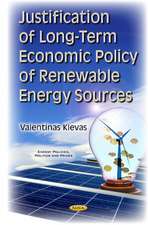Fusion: The Energy of the Universe
Autor Garry McCracken, Peter Stotten Limba Engleză Paperback – 6 iun 2012
- Comprehensive coverage— basic principles, detailed developments and practical applications
- Wide accessibility, but with sufficient detail to keep the technical reader engaged
- Details the initial discovery of nuclear fusion, current attempts to create nuclear fusion here on earth and today's concern over future energy supply
- Color illustrations and examples
- Includes technical notes for aspiring physicists
Preț: 291.22 lei
Preț vechi: 346.12 lei
-16% Nou
Puncte Express: 437
Preț estimativ în valută:
55.72€ • 58.18$ • 46.12£
55.72€ • 58.18$ • 46.12£
Carte tipărită la comandă
Livrare economică 28 martie-11 aprilie
Preluare comenzi: 021 569.72.76
Specificații
ISBN-13: 9780123846563
ISBN-10: 0123846560
Pagini: 248
Ilustrații: Approx. 100 illustrations
Dimensiuni: 152 x 229 x 15 mm
Greutate: 0.48 kg
Ediția:2. Auflage.
Editura: ELSEVIER SCIENCE
ISBN-10: 0123846560
Pagini: 248
Ilustrații: Approx. 100 illustrations
Dimensiuni: 152 x 229 x 15 mm
Greutate: 0.48 kg
Ediția:2. Auflage.
Editura: ELSEVIER SCIENCE
Public țintă
Researchers and graduate students in the plasma area—inertial fusion and magnetic fusion, and high energy density science and aerospace; physicists; electrical engineers, nuclear engineers; industrial engineersCuprins
1. What is Nuclear fusion?2. Energy from Mass3. Fusion in the Sun and Stars4. Man-Made Fusion5. Magnetic Confinement6. The Hydrogen Bomb7. Inertial Confinement Fusion8. False Trails9. Tokamaks10. From T3 to ITER11. ITER12. Large Inertial Confinement Systems13. Fusion Power Plants14. Why We Will Need Fusion Energy
Recenzii
"The second edition of the book contains two new chapters on ITER and NIF…The text of the book is simple and in easily readable language. Each chapter contains various colourful figures and scenarios of the experimental devices that the reader can follow easily. It provides an invaluable source of information to researchers and students of fusion technology, nuclear physics and power generation who can benefit from it." --Contemporary Physics, 2013


















